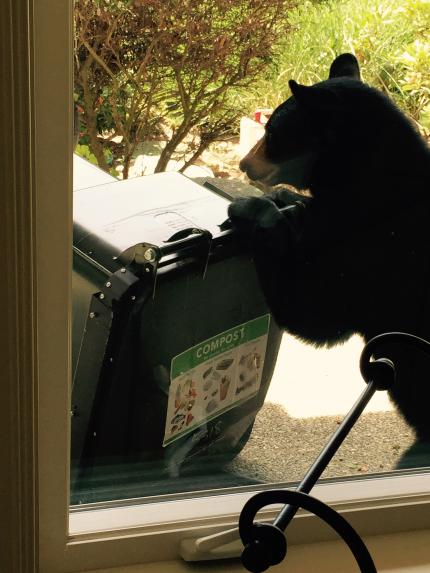ARCHIVED NEWS RELEASE
This document is provided for archival purposes only. Archived documents
do not reflect current WDFW regulations or policy and may contain factual
inaccuracies.
News release Oct. 7, 2020
Rich Beausoleil, 509-664-3148
Sam Montgomery, 360-688-0721
Fall is here, and Washington’s black bears are stocking up fat reserves for winter hibernation.

When it comes to finding food, black bears are opportunistic. They tend to choose foods with the highest number of calories, which can bring them into proximity with people.
Officials understand that watching a bear can be an awe-inspiring experience but warn residents to avoid attracting them to their homes or business.
“Be pro-active to avoid attracting bears close to populated areas - it helps keep you and them out of harm’s way,” said Rich Beausoleil, WDFW statewide bear and cougar specialist. “Following these simple steps can prevent virtually all negative black bear interactions.”
Follow these five tips to avoid negative bear interactions this fall:
- Always store garbage cans in a garage or sturdy building until collection day. Bears are smart and opportunistic. If a garbage can is left out, they’ll find it. Put garbage out the morning of collection, not the night before.
- Remove bird feeders (seed and liquid) from porches, trees, and other accessible areas, and feed pets inside. These feeders can inadvertently become easy, high-calorie attractants for bears. If they find it, they may come back.
- Pick and remove fruit from trees, even the highest branches. Bears love fruit and may climb trees to get it, possibly damaging valuable branches. Also remove fallen fruit.
- Don’t intentionally feed bears, deer, elk, or other wild animals. Bears have great memories, so once they find food, they’ll likely return and associate food with people. Anything a deer or elk will eat, a bear will eat too. Once bears learn to connect people with food, they will likely return and that increases the risk of a negative interaction.
- Confine chickens, and their feed, in secured and covered enclosures or barns. Electric fencing is highly recommended for all chicken enclosures.
Department staff are asking homeowners to take initiative even before spotting a bear near their home. If people wait until they see a bear, it may be too late to prevent a negative outcome. Taking these steps before a situation occurs is the best way to prevent risk to you and the bear.
A bear’s natural diet consists of natural foods such as blueberries (256 calories per pound) or huckleberries (166 calories per pound). Access to unnatural, high calorie foods, such as garbage, birdseed (1,750 calories), and hummingbird feeders (3,200 calories), may delay a bear’s natural hibernation patterns. This is another important reason to remove such items.
Those who have tried the recommendations listed above but are still experiencing bear visitations should call (360) 902-2936 to report concerns to WDFW enforcement. In an emergency, call 911.
People can find more information about how to avoid conflict with bears on WDFW’s webpage. Please contact a regional office if you have questions regarding living with bears.
The Washington Department of Fish and Wildlife is the state agency tasked with preserving, protecting and perpetuating fish, wildlife and ecosystems, while providing sustainable fishing, hunting, and other recreation opportunities.